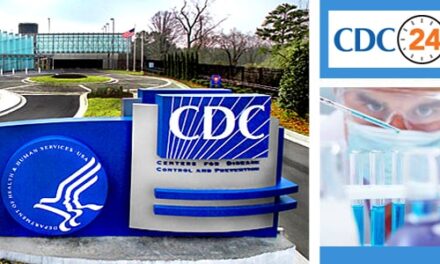
Storm’s Icy Grip Threatens South and Midwest of U.S.
Video

More than 100 million Americans were under some form of winter weather warning on Thursday, a day after a storm disrupted life across a wide swath of the country, closing courtrooms in New Mexico, blocking highways in Missouri and causing vehicle crashes in Indiana.
The storm was creating dangerous road conditions in several states, and more than 4,000 flights were canceled on Thursday, according to FlightAware, a tracking website.
Thursday could be “a very active weather day,” with widespread heavy snow and freezing rain from New England to Texas, the National Weather Service said. Portions of the South could see flash flooding.
In North Texas, two to four inches of snow and sleet were expected on Thursday, with light accumulations of ice. In Dallas, local officials urged motorists to stay off the roads to allow emergency medical workers to travel safely. The Dallas and Fort Worth school districts, among the largest in the state, will be closed for the rest of the week.
As of 11 a.m. Eastern time, nearly 70,000 customers in Texas, nearly 60,000 in Tennessee and about 25,000 in Arkansas had lost power, according to PowerOutage.us, a website that aggregates data from utilities across the United States. “It’s possible that our outages in western Arkansas will increase as the storm moves through,” said Peter Main, a spokesman for Southwestern Electric Power Company in Arkansas, who could not give an estimated timeline for restoration.
The Weather Service office in San Angelo, Texas, said on Twitter early Thursday that “many accidents” had been reported on Interstate 20, which runs through the Dallas-Fort Worth area. Michael Decker, a Weather Service meteorologist in San Angelo, said road conditions along a roughly 40-mile stretch of Interstate 20 west of Fort Worth were “fairly treacherous” because snow, freezing rain and sleet were combining to create a very slippery surface.
The storm arrived in Texas almost exactly a year after a weeklong freeze led to the deaths of more than 200 people and caused widespread power outages. But this time, freezing temperatures will lift after a couple of days.
“This won’t last as long,” said Jason Dunn, a meteorologist with the Weather Service in Fort Worth, who added that ice was among the greatest concerns.
“It accumulates really fast on trees,” he said. “Then they start to bend and fall on power lines.”
In Kansas, residents woke up Thursday to single-digit temperatures, with wind chills as cold as 17 degrees below zero. Officials in rural southeast Kansas reported several accidents on roads and highways slicked with snow and black ice.
At least five inches of snow fell in Fayetteville, Ark., but temperatures in the teens kept it dry and fluffy, making for easy work for dozens of snow plows clearing major roadways. No serious car crashes had been reported as of 8 a.m.
Arkansas is expecting significantly more snow, along with sleet and ice, as the day goes on, and the Weather Service there said conditions could cause power outages and make travel “very hazardous or impossible.”
Farther east, parts of western Tennessee and Kentucky were under an ice storm warning. In Memphis, ice began accumulating Thursday, leading to traffic accidents, downed trees and power outages. And in Illinois, a portion of Interstate 57 was blocked for several hours early Thursday after multiple tractor-trailers jackknifed.
The winter storm was expected to continue pushing east on Thursday. Parts of Maine could record up to 18 inches of snow, and up to 18 inches were also possible in parts of upstate New York.
“This newest storm is poised to hit us with everything in the weather arsenal — heavy snow, sleet and freezing rain,” Gov. Kathy Hochul of New York said on Wednesday
Image
A “damaging ice storm” is likely to affect a region from eastern Arkansas to western Kentucky on Thursday, the National Weather Service said, with parts of Texas and Ohio also expected to see heavy ice accumulation.
Although snow can be disruptive, especially for places that do not normally contend with it, ice is considered a more serious threat. As roads become slick, crashes can injure or kill people while snarling important traffic routes. Outages often occur when trees and power lines snap under the weight of accumulating ice.
The Weather Service in Louisville, Ky., warned of “treacherous driving conditions” and said that travel would be “difficult to impossible” by late Thursday. Louisville and Frankfort could see between a quarter-inch and half-inch of ice, with even more possible in Lexington, it said.
Gov. Asa Hutchinson of Arkansas positioned eight National Guard units across the state in advance of the storm, which is coming days after residents in shorts and T-shirts filled grocery stores in search of winter supplies.
The Weather Service in Little Rock expects the state’s northwest, which includes Fayetteville, to receive the most snow — about six inches — but says the problematic ice buildup is projected for the central I-40 corridor.
“When it comes to ice, it’s just a completely different animal,” Dave Parker, a spokesman for the Arkansas Department of Transportation, told reporters.
In Middletown, Ohio, an industrial steel city between Dayton and Cincinnati, residents were warily eyeing a forecast on Wednesday that called for cold rain to change to ice and snow after dark.
Diver’s Garden and Pet Supplies, a mainstay for 130 years, has closed because of snow only twice — during the Great Blizzard of 1978 and another storm in 2008. Its customers, however, seemed to be preparing for the worst.
Aaron Diver said the business had gone through three semi-truck loads of salt and lots of bird food, a popular alternative. The ice melt and firewood were sold out.
Tom Huiet was one of the last-minute shoppers who came into Diver’s seeking salt to put on his driveway and sidewalks. He works for the city’s building inspection division but will be called on to plow roads when the storm hits.
“I am going to go home and get a nap now,” he said.
— Kevin Williams and Bret Schulte
Image
As several states prepare for snow and freezing rain, others were already digging out with the knowledge that another band of precipitation might make their job more difficult.
In Wichita, Kan., where the snowfall was expected to reach six inches by Thursday morning, public schools canceled classes for a second day. About a foot of snow coated the Mississippi River cities of Hannibal, Mo., and Quincy, Ill. The Chicago area appeared to take between six and 12 inches of snow in stride, and Lansing, Mich., received more than a foot.
Power outages were largely avoided along the storm’s path.
“Our goal is to have everything cleaned up this evening before the other blast comes and then wait and see,” John Whanger, who owns a landscaping and snow removal business in the St. Louis area, said on Wednesday afternoon. “I think the second wave is going to be tough.”
The St. Louis airport had received only two inches of snow by Wednesday evening, but Mr. Whanger paid for his employees to stay at a hotel overnight because an additional five to seven inches was expected, according to the National Weather Service in St. Louis.
Farther west, the airport in Tulsa, Okla., recorded three inches of snow. A dusting in Albuquerque was expected to reach several inches on Thursday as much of New Mexico experienced freezing temperatures.
While the storm was expected to produce unusually large amounts of snowfall for the area, forecasters emphasized that the precipitation remained far from what would be needed to significantly alleviate drought conditions.
“It’s still so dry that we probably need more events like this one to really put any kind of dent into it,” said Scott Overbeck, the warning coordination meteorologist for the Weather Service in Albuquerque.
— Eric Berger and Simon Romero
Image
SAN ANTONIO — Nearly a year after a catastrophic winter storm led to sweeping power outages and left more than 200 people dead, Texans braced on Thursday morning for freezing temperatures as an icy rain began coating large parts of the state.
More than 60,000 homes and businesses in Texas were without electricity, according to the website PowerOutage.us, though there were no reports of widespread accidents.
Texas is no stranger to summer weather events such as heat waves and hurricanes. But state officials were unprepared last February when an eight-day winter storm plunged the state into darkness and bitter cold.
During that storm, which caused an estimated $130 billion in damages, disaster declarations were made for all of the state’s 254 counties after the power grid failed and more than 4.5 million customers lost electricity and heat. More than 240 people died from hypothermia, carbon monoxide poisoning, car crashes, drownings and house fires.
This week, the freezing temperatures are mainly forecast to affect the Dallas metropolitan area and other cities in the northern part of the state, including Lubbock, and are expected to last only until Saturday. Meteorologists said the storm would bring sleet, freezing rain, ice and aggressive wind chills.
State officials reassured Texans that the power grid would hold for most residents and urged them to stay off the roads. Many counties and municipalities were under winter storm warnings or advisories on Thursday morning.
Last year’s storm has become a political liability for Gov. Greg Abbott, who is seeking another term. His Democratic challenger, Beto O’Rourke, and other critics say many of the problems that pushed the Texas electrical grid to the brink of total collapse have not been addressed. For example, the companies that operate the natural gas systems that froze in February, cutting off supply to power plants, are still not required to better prepare their equipment during cold snaps.
Also, measures have not been taken to reduce demand for heat, particularly in poorly insulated dwellings. Incentives in the Texas market — which has prioritized cheap electricity over reliability — are still largely in place, critics said.
Image
CLEVELAND — Grocery shoppers did what grocery shoppers often do as a major snowstorm bore down on the Great Lakes: They bought a little extra, just in case.
“I’m here to get the stuff I need to make spaghetti sauce,” said Edwina Neal, AGE?, while waiting in a line about a dozen people deep at a supermarket in the Shaker Heights neighborhood on Wednesday evening.
“If I have to stay home for a few days, I’ll have what I need to eat,” Ms. Neal said. “But we’re used to this kind of snowfall in Cleveland.”
Although maybe not. About 3 to 6 inches fell in the area overnight, keeping many commuters off the roads and forcing schools and colleges to close or move to remote learning, and forecasters predicted that 12 to 16 total inches would fall before the day is done.
If so, that would be close to or above the city’s one-day record of 13.6 inches that fell on Feb. 23, 1999.
Still, in Lakewood, Ohio, a suburb just west of Cleveland, the region seemed to be handling the snowfall just fine, with the streets clear and the stores open on Thursday morning. A mid-January snowfall of 15 inches over two days led to the suspension of mass transit, but buses and trains were operating early Thursday.
“I’m hoping they can run for this snowstorm, because a lot of us need those services to get to work,” said Ariel Hawthorne, AGE?, an office cleaning worker waiting for a light rail train on Wednesday night. “We need to eat and we need to get to work, and not all of us have a car to do those things.”
— Daniel McGraw
Image
In the aftermath of a major snowstorm that hit Virginia last month, safety experts have offered advice on how people can stay safe if they are stuck in their vehicles. Their top tip? Be prepared.
But first, a caveat: Check the weather forecast before hitting the road, they said. If a snowstorm is expected, it is best to stay put.
For those who venture out, here are some important safety tips.
Pack a ‘go bag’ for your car
Some important essentials to bring are food, water and a charged cellphone, said Dr. Ken Zafren, an emergency medicine professor at Stanford University.
Also helpful: parkas, blankets, sleeping bags, boots, mittens, hats, flares, medications, wipes, a shovel, a first-aid kit, a cellphone charger, an ice scraper, jumper cables and a full tank of gas.
Stay warm.
First, do not leave your car, experts said, warning about the risks of hypothermia or becoming lost.
Instead, generate heat by turning on the car for up to 10 minutes every hour, said Dr. Steve Mitchell, a medical director at the Harborview Medical Center emergency department in Seattle.
There is only one situation in which you should step outside: if you need to check that your tail pipe is clear, to eliminate the risk of carbon monoxide poisoning from exhaust, experts said.
Take care of yourself.
If you have them, eat foods that are high in fat and carbohydrates, like nuts or candy bars, said Dr. Grant Lipman, the founder of the Global Outdoor Emergency Support.
If you run out of water, drink melted snow, Dr. Mitchell said. But don’t drink alcohol.
Have wipes and a bottle handy if you need to go to the bathroom, Dr. Lipman said.
While your phone may provide a needed distraction, it is important to preserve your battery so that you can make emergency calls, he said. Close your browser and any other battery-draining apps.
Image
A broad upheaval in the U.S. labor force since the pandemic began in 2020 has trickled down to the transportation sector, creating shortages of snowplow operators as well as city and school bus drivers.
“I don’t know where everybody’s gone, with Covid and everything,” said Chris Ferreira, the owner of a towing company in Chelmsford, Mass., who was trying to fill four positions for plow drivers this month. “As far as hiring help, I can’t get any, and the price of fuel has jumped up. It has gone up so tremendously it affects all the overhead.”
He added, “Right now, to get tow drivers, we have to pay more money, but we can’t charge more money.”
Snowplow drivers in the United States are usually either permanent employees in state transportation departments, state seasonal hires or tow truck drivers who also clear snow for private companies that, like Mr. Ferreira’s, have government contracts.
Snowplow hiring is “a major challenge nationwide,” because freight haulers and package-delivery companies are also vying for commercial drivers, said Kris Rietmann Abrudan, the communications director for the Washington State Department of Transportation.
“We are all competing for essentially the same group of applicants,” she said.
Cities and states are trying to adapt to the hiring challenge by raising pay, offering bonuses and training, shuffling employee shifts and putting some routes on the back burner to ease the workload.
Image
The winter storm sweeping across much of the United States led to thousands of flight cancellations and delays on Thursday, with many more likely throughout the day.
As of noon Eastern time, 4,630 flights scheduled to arrive at or depart from U.S. airports on Thursday had been canceled, and an additional 934 were delayed, according to FlightAware, a tracking website.
One of the hardest-hit cities was Dallas, which had about 800 canceled departures and about 750 canceled arrivals. At Dallas-Fort Worth International Airport, 65 percent of departing flights and 60 percent of arriving flights were canceled, and at Dallas Love Field Airport, 84 percent of departures and 78 percent of arrivals were canceled.
By a little after noon, Dallas-Fort Worth had reopened one runway but warned, “Due to ongoing weather conditions, we anticipate intermediate stoppages throughout the day to treat for snow and ice.”
A majority of flights were canceled at each of the three largest airports serving Ohio — Cleveland Hopkins International Airport, John Glenn Columbus International Airport and Cincinnati/Northern Kentucky International Airport — as well as at airports in St. Louis and in Austin, Texas.
On an average day, the Federal Aviation Administration handles 45,000 flights, meaning the cancellations and delays on Thursday are affecting more than 10 percent of air traffic in the U.S. That is a remarkably high number: While there is much seasonal variation, daily cancellation totals tend to be less than 2 percent on average.
From January 2021 through November 2021 — the last period for which official data is available — 1.65 percent of U.S. flights were canceled, according to the Transportation Department’s Bureau of Transportation Statistics. (The total for the full year is likely to be somewhat higher because the Omicron variant caused a surge in cancellations around the holidays.)
Already, airlines have canceled nearly twice as many U.S. flights on Thursday as the 2,372 they did on Wednesday.
Source: https://www.nytimes.com/live/2022/02/03/us/winter-storm-snow-ice















